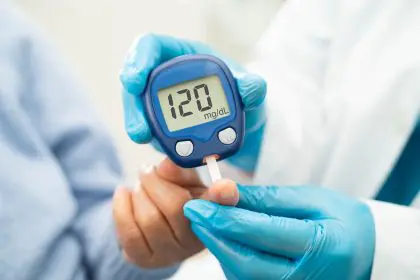Cases of childhood diabetes continue to rise across the country, affecting both younger children and adolescents. Early detection can significantly impact a child’s health trajectory, making awareness of warning signs crucial for parents and caregivers.
Increased bathroom visits
Frequent urination often marks the first noticeable sign of childhood diabetes. The body, unable to process glucose properly, forces the kidneys to work overtime filtering excess sugar from the bloodstream.
This increased urination typically becomes most apparent at night. Children may suddenly start wetting the bed after being dry for years, or wake frequently for bathroom visits. The pattern often becomes more pronounced over time rather than occurring occasionally.
Unusual thirst patterns
Excessive thirst accompanies increased urination, creating a challenging cycle. Children with developing diabetes often drink considerably more than usual, yet still feel parched. This perpetual thirst continues even in comfortable temperatures and without physical activity.
Parents might notice water bottles emptying more quickly or children constantly asking for drinks. This thirst differs from normal increases during hot weather or after exercise, persisting throughout the day and night.
Unexplained weight changes
Sudden weight loss, particularly without changes in diet or activity, can signal diabetes in children. When the body cannot properly use glucose for energy, it begins breaking down fat and muscle tissue instead.
This weight loss often occurs rapidly and noticeably. Children may appear thinner despite eating normal or even increased amounts of food. Clothes might suddenly fit loosely, or facial features may appear more pronounced.
Changes in appetite
Diabetes can trigger intense hunger in children, even shortly after meals. This increased appetite stems from cells starving for glucose they cannot properly absorb. Despite consuming more food, children may continue losing weight.
The combination of increased eating and weight loss particularly warrants attention. This pattern indicates the body’s inability to utilize food properly, a hallmark of diabetes development.
Energy and mood fluctuations
Fatigue and irritability often accompany developing diabetes in children. Without proper glucose absorption, energy levels drop significantly. Children may struggle to maintain their usual activity levels or tire unusually quickly during regular play.
Mood changes frequently accompany this fatigue. Previously energetic children might become listless or irritable. These behavioral changes often affect school performance and social interactions.
Understanding blood sugar’s role
These symptoms stem from the body’s inability to properly regulate blood sugar. In Type 1 diabetes, the pancreas stops producing insulin, the hormone necessary for glucose absorption. Type 2 diabetes involves reduced insulin effectiveness or insufficient production.
Both types prevent cells from accessing the glucose they need for energy, triggering the body’s emergency responses. These responses create the observable symptoms that signal developing diabetes.
When to seek help
Any combination of these symptoms warrants medical attention. While individual signs might have other explanations, multiple symptoms occurring together suggest possible diabetes. Early intervention can prevent serious complications.
Medical providers can perform simple blood tests to check glucose levels. These tests provide quick, definitive answers about whether diabetes requires further investigation or treatment.
Managing childhood diabetes
Modern diabetes management allows children to lead active, healthy lives. Treatment typically involves:
Blood sugar monitoring throughout the day to maintain proper levels.
Insulin administration as needed, either through injections or pumps.
Dietary adjustments to help regulate blood sugar naturally.
Supporting affected children
Children with diabetes need both medical care and emotional support. Creating routines around monitoring and medication helps normalize the condition. Including children in age-appropriate decision-making about their care builds confidence and responsibility.
School staff, extended family, and friends should understand basic diabetes management. This knowledge ensures children receive proper support throughout their daily activities.
Looking ahead
While a diabetes diagnosis changes a child’s life, it needn’t limit their potential. Early recognition of symptoms, followed by proper medical care and support, allows most children with diabetes to thrive.
Modern treatment options, combined with growing understanding of the condition, give children with diabetes more opportunities than ever to lead full, active lives.
This story was created using AI technology.











